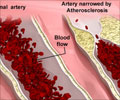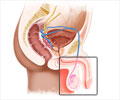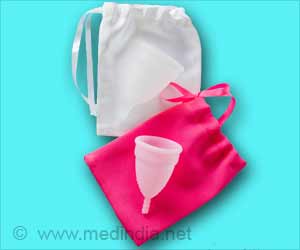Study identifies link between poor cardiorespiratory fitness and risk of cardiovascular disease in children and adolescents.

- Shuttle run test is an excellent tool for identifying those who have an increased risk of suffering from a cardiovascular disease or myocardial infarction in the future.
- The population of children and adolescents at risk can be determined by measuring aerobic fitness level using cardiorespiratory fitness cut points.
- The percentage of children and adolescents at risk of suffering from a cardiovascular disease ranged from 6% to 39% for boys and from 6% to 86% for girls.
Test
The researchers reviewed seven studies involving more than 9,000 children and adolescents aged 8 to 19 from 14 countries.
The '20-meter test' or 'shuttle run test' is a simple test consisting of running a distance to a progressively increasing speed.
The test assesses aerobic capacity using cardiorespiratory fitness cut points.
"Below recommended fitness levels (maximum oxygen consumption of 42 and 35 mL/kg/min for boys and girls, respectively), we should raise a red flag which keeps us alert", says Jonatan Ruiz.
"Although this proficiency test is widely used in schools and provides us with valuable health information, physicians and health professionals who assess the risk of present or future cardiovascular diseases for those ages are yet to adopt these rules", says the UGR researcher.
Results
The results of the research revealed that the percentage of children and adolescents at risk of suffering from a cardiovascular disease ranged from 6% to 39% for boys and from 6% to 86% for girls.
In boys a level of aerobic capacity above 42 mL/kg/min indicated a risk of of having cardiovascular disease. With this capacity, boys had a 5.7 times more likelihood of having the condition..
In girls, a level of aerobic capacity above 35 mL/kg/min indicated a risk of of having cardiovascular disease. They were 3.6 times more likely to be at risk. The '20-meter test' is currently used to measure the aerobic capacity of children in most schools in Spain, as well as in many European countries.
The test allows to determine which children have worse cardiovascular health and should undergo an intervention program to improve it.
The work has been published in the Sports Science magazine, the British Journal of Sports Medicine.
Reference
- Jonatan R Ruiz et al.Cardiorespiratory fitness cut points to avoid cardiovascular disease risk in children and adolescents; what level of fitness should raise a red flag? A systematic review and meta-analysis. British Journal of Sports Medicine; (2017) doi.org/10.1136/bjsports-2015-095903
Source-Medindia












